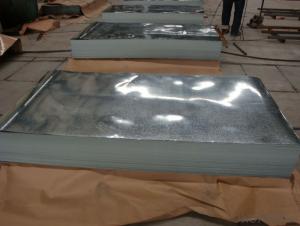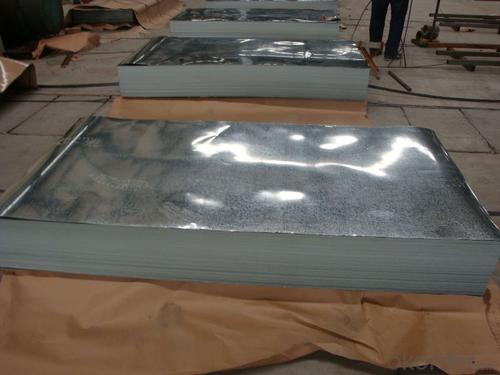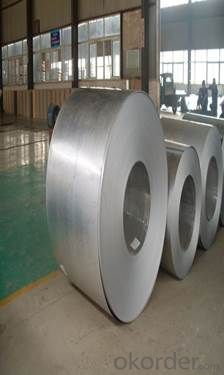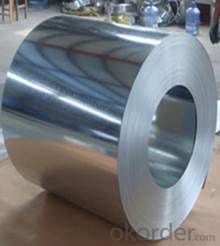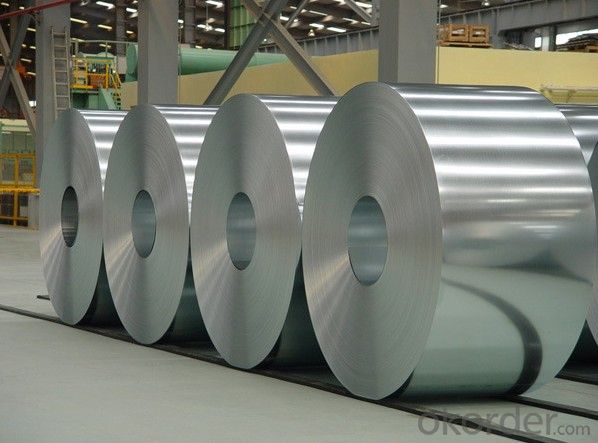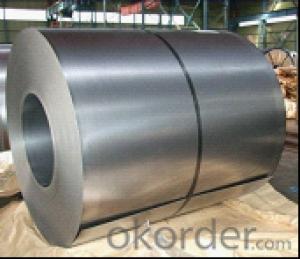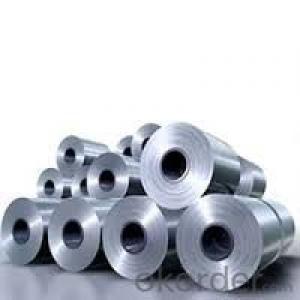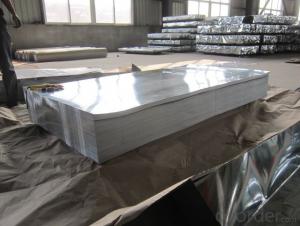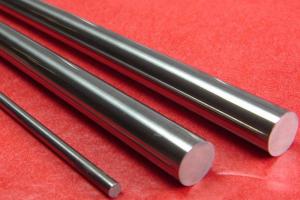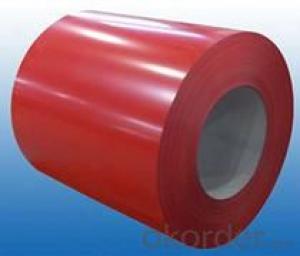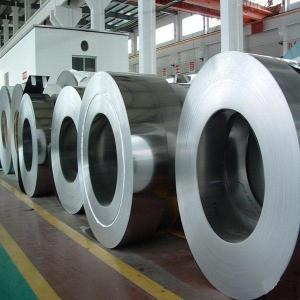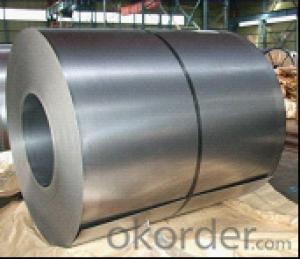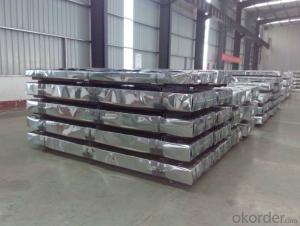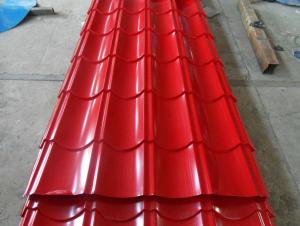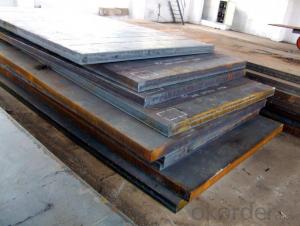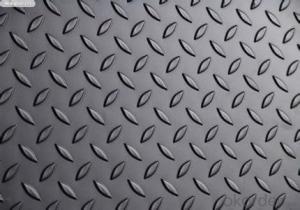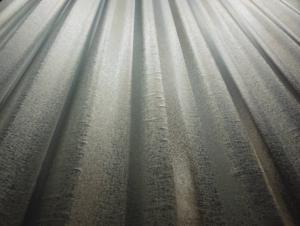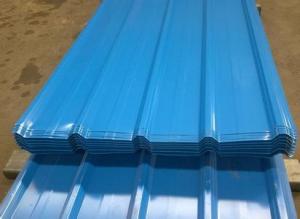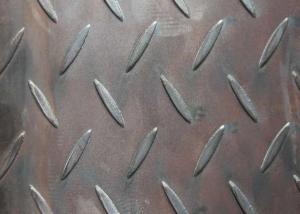Hot dipped Galvanized steel from China, CNBM, fast delivery
- Loading Port:
- China main port
- Payment Terms:
- TT OR LC
- Min Order Qty:
- 1 m.t.
- Supply Capability:
- 100000 m.t./month
OKorder Service Pledge
OKorder Financial Service
You Might Also Like
Hot dip galvanized steel coil and sheet | |
Technical Standard: | JIS 3302 / ASTM A653 / EN10143 |
Grade | DX51D / DX52D/ DX53D/ S250,280,320GD |
Types: | Commercial / Drawing / Deep Drawing / Structural quality |
Width | 500/650/726/820/914/1000/1200/1219/1220/1250mm |
Thickness | 0.12-4.0mm |
Type of coating: | Galvanized |
Zinc coating | Z30-700g/m2 |
Surface Treatment | Chromed / Skin-pass/ Oiled/Slightly Oiled/ Dry/ Anti-fingerprint |
Surface structure: | Zero spangle / minimized spangle / regular spangle/ big spangle |
ID coil | 508mm or 610mm |
Coil weight | 3-12 MT per coil |
Package: | Properly packed for ocean freight exportation in 20''containers |
Application: | Industrial panels, roofing and siding for painting |
Price terms | FOB,CFR,CIF |
Payment terms | T/T or L/C |
Delivery time | Within 30 days |
Remarks | Insurance is all risks |
MTC will be handed on with shipping documents | |
We accept the third party certification test,such as SGS/BV |
Technical data :
Hot dipped galvanized coil Technical Data
Chemical Composition | ||||||
GRADE | C | Si | Mn | P | S | Ti |
SGCC/DX51D+Z | ≤0.10 | ≤0.50 | ≤0.60 | ≤0.10 | ≤0.030 | ≤0.020 |
DX52D+Z | ≤0.10 | ≤0.50 | ≤0.60 | ≤0.10 | ≤0.030 | ≤0.020 |
SGCD/DX53D+Z | ≤0.10 | ≤0.30 | ≤0.50 | ≤0.05 | ≤0.030 | ≤0.020 |
SGCE/DX54D+Z | ≤0.10 | ≤0.30 | ≤0.30 | ≤0.03 | ≤0.020 | ≤0.020 |
DX56D+Z | ≤0.10 | ≤0.30 | ≤0.30 | ≤0.03 | ≤0.020 | ≤0.020 |
Structural | ≤0.20 | ≤0.60 | ≤1.70 | ≤0.10 | ≤0.045 | |
Hot dipped galvanized steel coil Mechanical Properties | |||
GRADE | Yield Strength MPa | Tensile Strength MPa | Elongation % |
SGCC(DX51D+Z) | ≥205 | ≥270 | - |
SGCD(DX53D+Z) | - | ≥270 | 38 |
SGCE(DX54D+Z) | - | ≥270 | 40 |
DX56D+Z | - | ≥270 | 42 |
- Q: Can steel sheets be used in outdoor applications?
- Steel sheets are a great option for outdoor applications. They possess exceptional durability and strength, enabling them to withstand diverse weather conditions, thus rendering them suitable for outdoor use. The construction industry heavily relies on steel sheets for roofing, siding, and cladding purposes. Additionally, they are extensively utilized in outdoor storage sheds, fences, and gates. To enhance its corrosion resistance against moisture and environmental elements, steel sheets can be coated with galvanization or painting. Consequently, their ability to withstand exposure to such factors is greatly improved. All in all, steel sheets are an exceedingly dependable choice for outdoor applications, thanks to their strength, durability, and versatility.
- Q: What is the standard size of a steel sheet?
- The standard size of a steel sheet can vary depending on the specific application and industry. However, in general, steel sheets are commonly available in standard sizes such as 4 feet by 8 feet (1.2 meters by 2.4 meters) or 5 feet by 10 feet (1.5 meters by 3 meters). These dimensions are widely used in construction, manufacturing, and fabrication processes. It is important to note that customized sizes can also be obtained based on the requirements of a particular project or customer.
- Q: Can steel sheets be used for automotive body reinforcements?
- Yes, steel sheets can be used for automotive body reinforcements. Steel is a commonly used material in the automotive industry due to its high strength and durability. Steel sheets provide structural support and enhance the safety of vehicles by reinforcing the body and absorbing impact during collisions.
- Q: What's the density of the 0.5 color steel plate?
- 0.5 color steel plate density is 7.85kg/m fand.Color refers to the color coated steel plate, color coated steel plate is a steel plate with organic coating, with good corrosion resistance, bright color, beautiful appearance, easy molding and has a steel plate and the original strength and low cost.
- Q: Are steel sheets suitable for earthquake-prone areas?
- Steel sheets are indeed suitable for earthquake-prone areas due to their inherent strength and flexibility. The ductility of steel allows it to absorb and dissipate the energy generated during an earthquake, minimizing structural damage. Additionally, steel's high strength-to-weight ratio makes it an ideal material for constructing earthquake-resistant buildings, as it can withstand the lateral forces exerted during seismic events. Overall, using steel sheets in earthquake-prone areas helps ensure the safety and resilience of structures against seismic activities.
- Q: How do steel sheets perform in terms of energy efficiency?
- Steel sheets have excellent energy efficiency performance due to their high thermal conductivity, which allows for efficient heat transfer. Additionally, steel sheets are often used in construction for their insulating properties, reducing energy consumption for heating and cooling.
- Q: Can steel sheets be used for storage containers?
- Yes, steel sheets can be used for storage containers. Steel is a strong and durable material that can withstand heavy loads and harsh weather conditions, making it ideal for storage containers. It offers excellent protection against moisture, pests, and theft. Steel containers are commonly used in various industries such as shipping, construction, and warehousing. They are also popular for temporary storage solutions and can be easily transported and stacked. Additionally, steel containers can be customized with various accessories such as doors, windows, and ventilation systems to suit specific storage needs.
- Q: Do the steel sheets come in different finishes?
- Yes, steel sheets do come in different finishes. Some common finishes for steel sheets include brushed, polished, matte, satin, and textured. These finishes are achieved through various processes such as grinding, sanding, or chemical treatments. The choice of finish depends on the desired aesthetic appeal, functionality, and intended use of the steel sheet. Different finishes can provide different levels of shine, smoothness, or texture, allowing for customization and versatility in various applications such as architectural, automotive, or industrial uses.
- Q: Can steel sheets be used for electrical transformers?
- Yes, steel sheets can be used for electrical transformers. Steel is often used as the core material in transformers due to its magnetic properties and ability to efficiently conduct magnetic flux.
- Q: How do you calculate the weight of a steel sheet?
- To calculate the weight of a steel sheet, you need to know its dimensions (length, width, and thickness) and the specific gravity of steel. Multiply the area of the sheet (length multiplied by width) by the thickness and then multiply the result by the specific gravity of steel (usually around 7.85 g/cm³). This will give you the weight of the steel sheet in grams or kilograms.
Send your message to us
Hot dipped Galvanized steel from China, CNBM, fast delivery
- Loading Port:
- China main port
- Payment Terms:
- TT OR LC
- Min Order Qty:
- 1 m.t.
- Supply Capability:
- 100000 m.t./month
OKorder Service Pledge
OKorder Financial Service
Similar products
Hot products
Hot Searches
Related keywords
